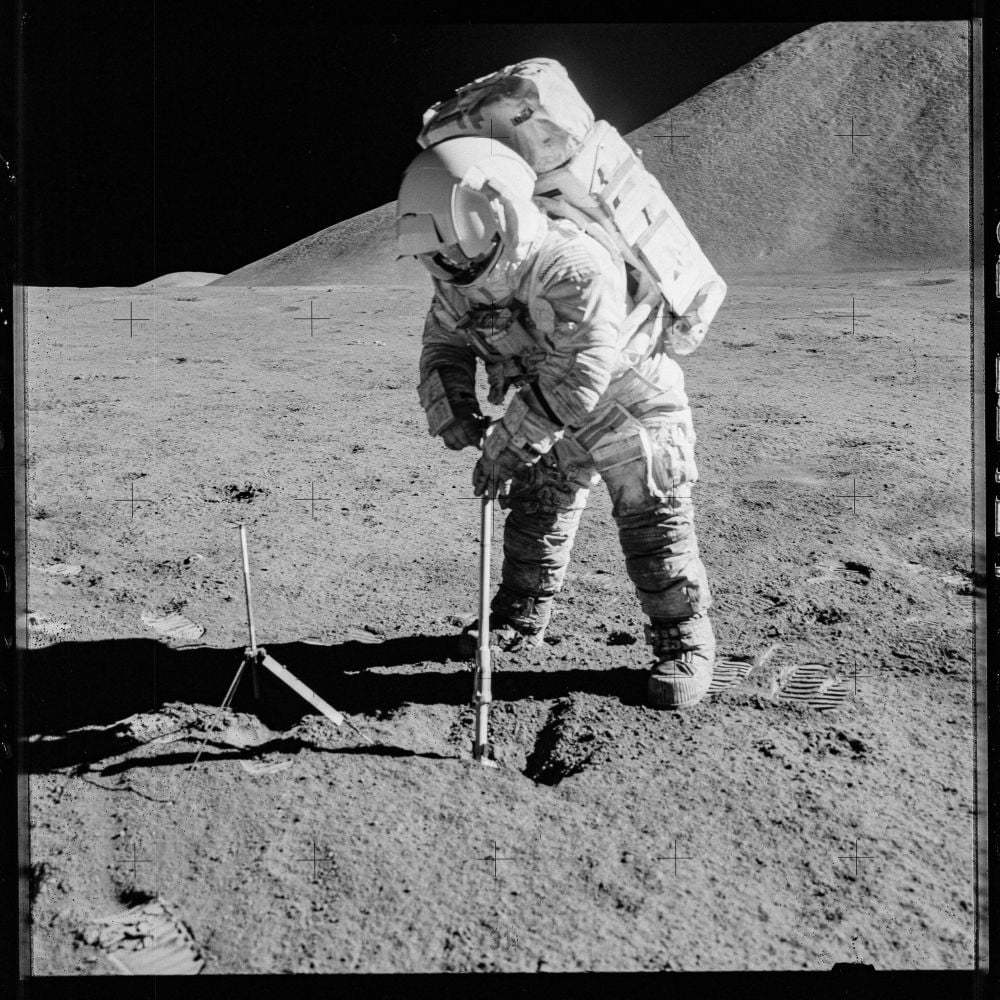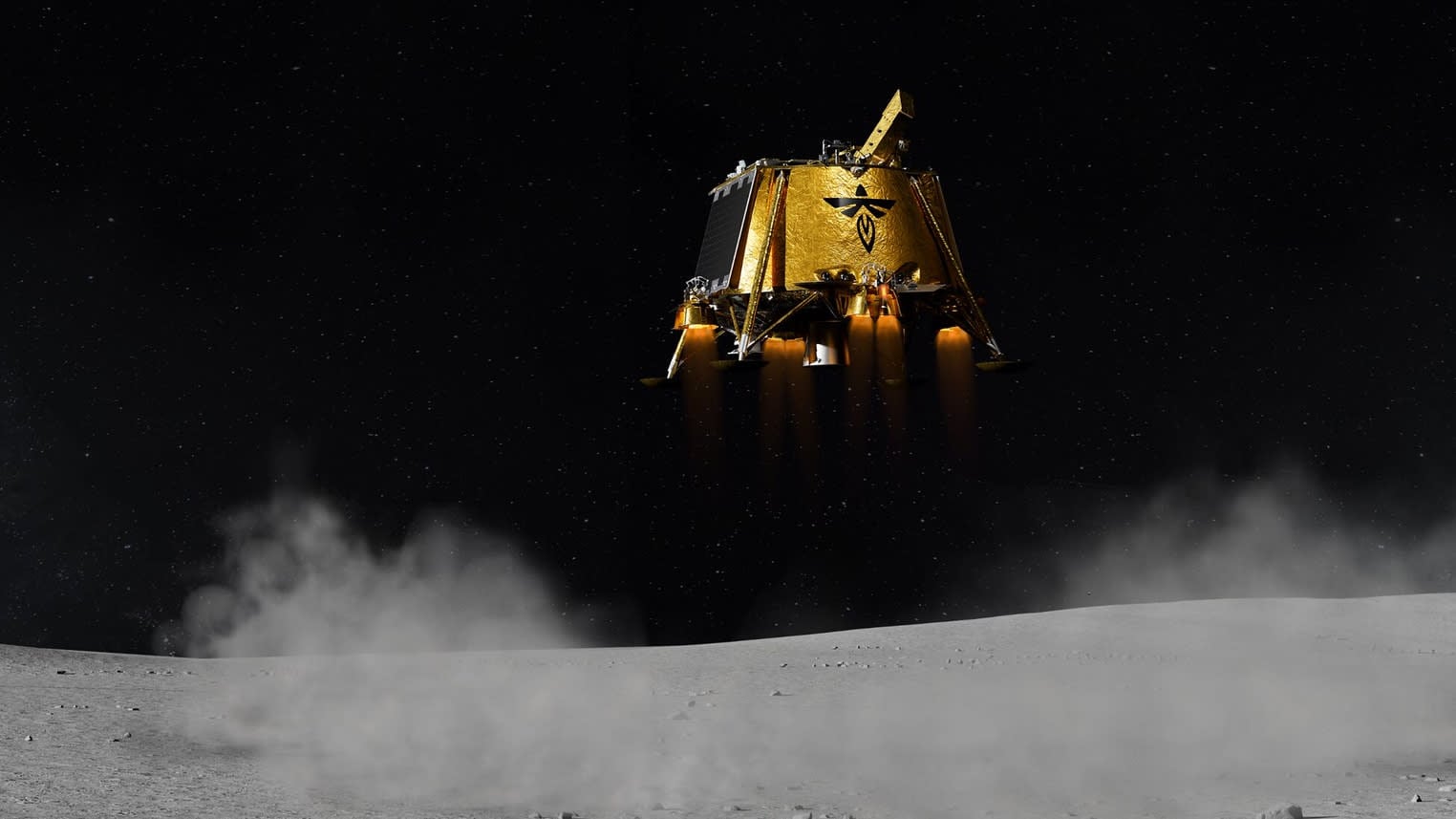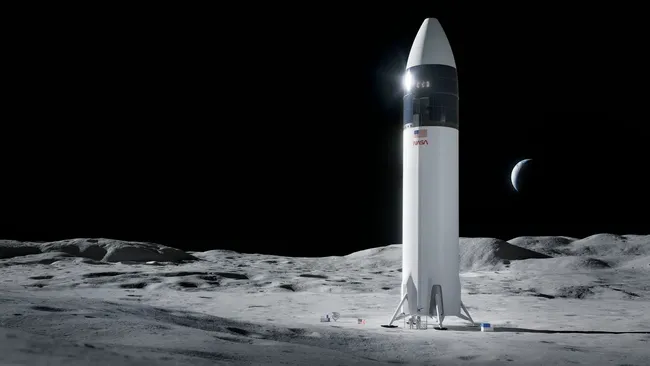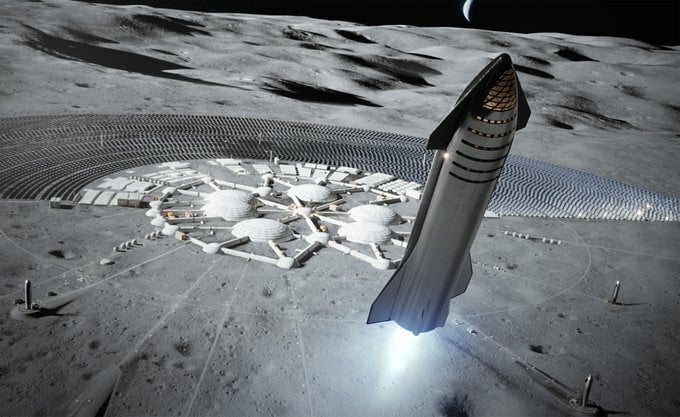Finally, a few decades after the last lunar landings, humans are preparing to return to the Moon with renewed purpose and expanded capabilities. Various space agencies and commercial enterprises are developing missions that will allow astronauts to spend longer periods on the lunar surface than was possible during the Apollo program. These upcoming missions aim to establish more permanent facilities where researchers can conduct scientific studies, test new technologies, and possibly utilise local resources. The knowledge gained from these activities will likely contribute to our understanding of both the Moon itself and potential future exploration of other celestial bodies.
 Apollo astronaut exploring the surface of the Moon (Credit : NASA)
Apollo astronaut exploring the surface of the Moon (Credit : NASA)
With the increase in lunar exploration it's likely that there will be an increase in spacecraft landing on the Moon. With an increase in lunar 'traffic' it is crucial to minimise dust emissions generated by the rocket plume which is likely to lead to a build up in lunar dust in orbit, creating a hazard to visiting spacecraft. Teams of researchers led by Tobias Lamping fro the Institute of Particle Technology in Germany are now actively studying ways to build dedicated lunar landing platforms to minimise this risk. The platforms must prevent dust and erosion damage during launches and landings to ensure mission safety and reliability.
 Artist impression of Firefly Aerospace's Blue Ghost lunar lander (Credit: Firefly Aerospace)
Artist impression of Firefly Aerospace's Blue Ghost lunar lander (Credit: Firefly Aerospace)
The scientists are conducting experiments and simulations to understand how rocket plumes interact with the lunar surface, helping them design landing pads that can withstand the challenging conditions on the Moon. To design effective lunar landing pads, the researchers must understand how spacecraft exhaust causes surface erosion and dust dispersal during landings and takeoffs. They employed three main simulation approaches: full-scale modelling, focused small-scale interaction studies between plumes and regolith and then tracking particle paths using discrete phase modelling. These simulations help predict how rocket exhaust interacts with the Moon's surface under challenging lunar conditions.
This research introduces an approach that combines different computational models operating at various physical scales to capture plume dynamics that span multiple length and time scales. In doing so they have been able to analyze rocket interactions with lunar landing pads made from local materials. Using Computational Fluid Dynamics and Discrete Element Methods that accounts for various fluid-particle forces, the simulation tracks erosion volume, flow rates, and temperature changes across different pad layers.
 Artist impression of an Artemis SpaceX Starship on the lunar surface (Credit: SpaceX)
Artist impression of an Artemis SpaceX Starship on the lunar surface (Credit: SpaceX)
The key finding reveals that landing pad melting temperature and heat absorption determine when erosion begins. Future work will examine how rocket hover height affects erosion and will incorporate different particle sizes in simplified models, with results to be validated against experimental data. As humanity returns to the Moon, the engineering challenges of rocket plume interactions highlight the balance between ambition and caution needed for sustainable space development.
The simulations run by the team represent one crucial aspect of the comprehensive planning required for establishing permanent human presence beyond Earth. By addressing fundamental issues like landing pad construction we can establish the foundation for a future where lunar missions become routine. The knowledge gained won't only secure our foothold on the Moon but will guide human expansion throughout the Solar System.
Source :Simulation of the plume-surface interaction with a manufactured landing pad
 Universe Today
Universe Today
